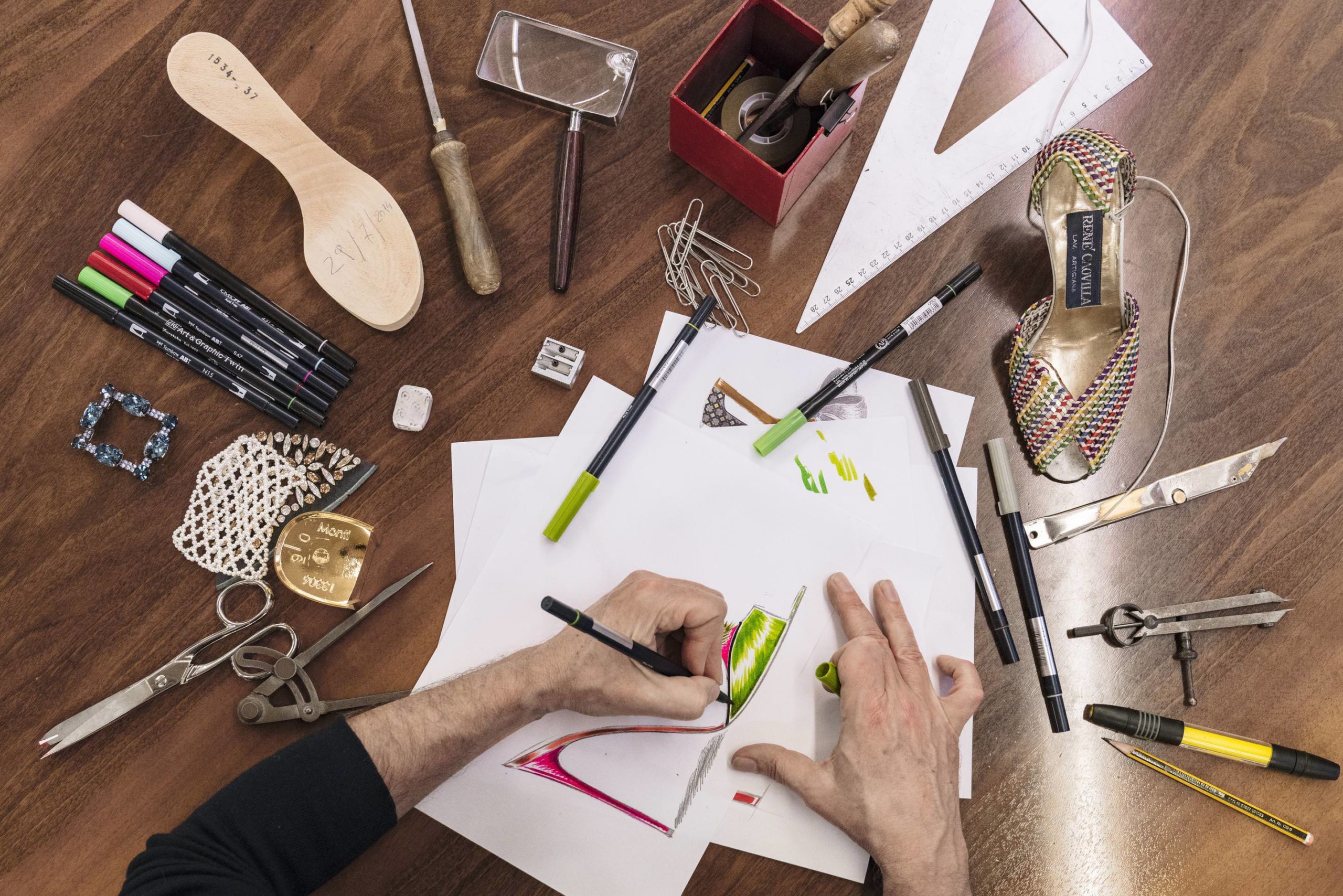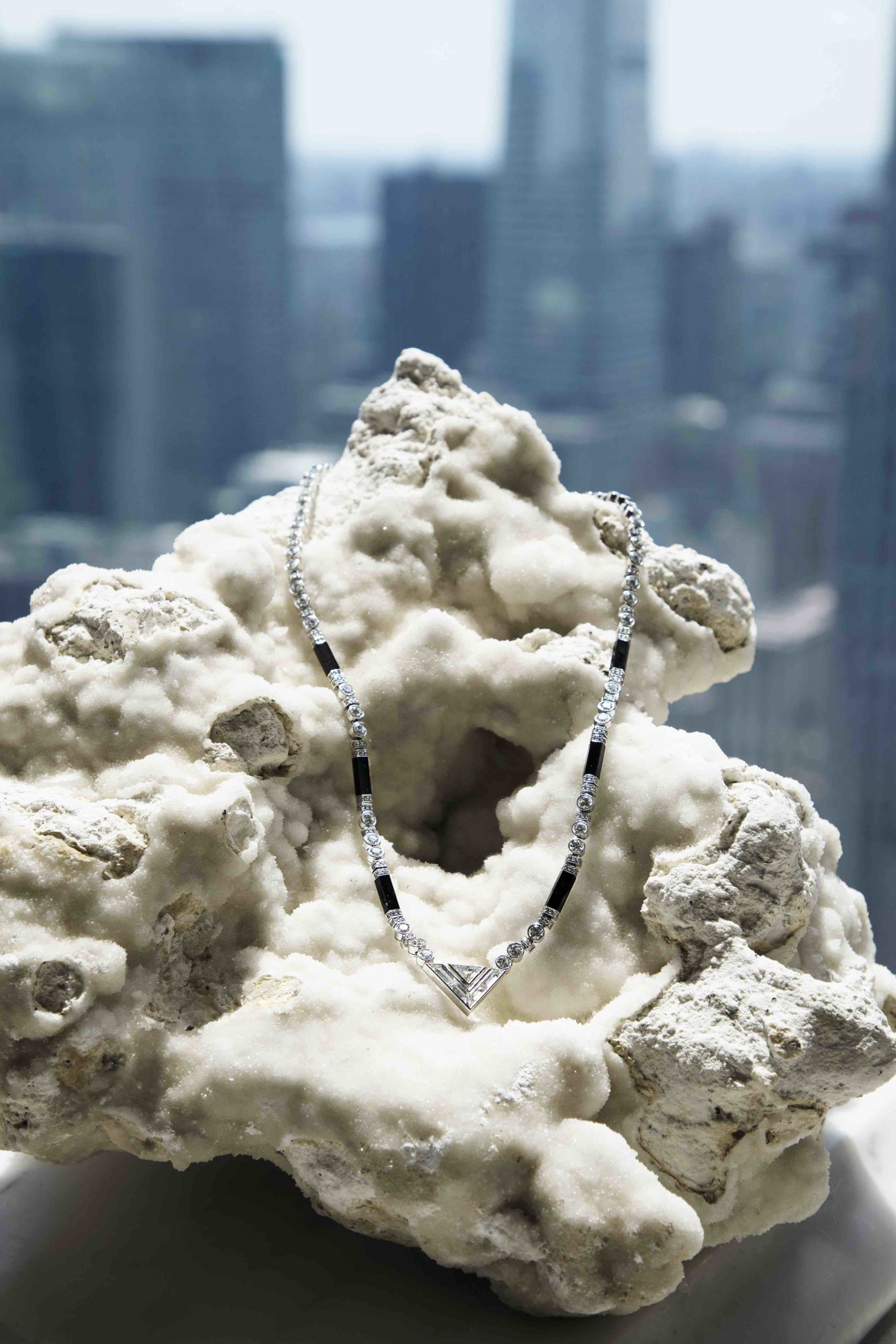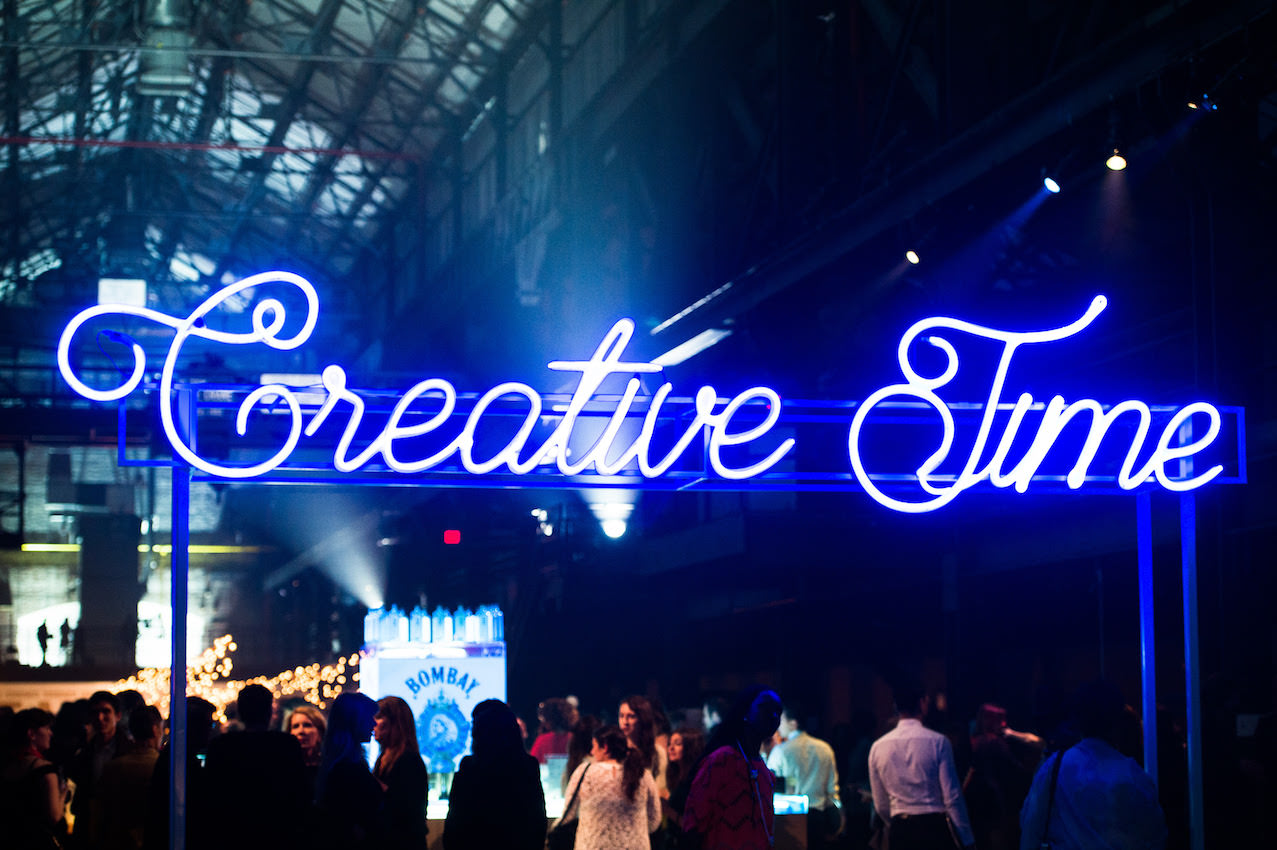MoMA’s “Robert Gober: The Heart Is Not a Metaphor” is the first American retrospective of the artist’s work to date, chronicling a 40-year career. Open through January 18, 2015, the exhibition features approximately 130 works encompassing trompe-l’oeil sculpture, immersive installations, drawings, paintings, and prints. The show is expansive, yet subdued and draws on Gober’s work as both artist and curator by restaging a number of earlier shows.
Primordial works date from Gober’s college days, which he felt was a crucial part of the survey. He wanted to illustrate his progression as an artist, even if these initial works were perhaps less successful than his more recent ones. (This didn’t prove to be a problem; the work in the show is incredibly consistent.) “I would go to these retrospectives as a young artist, and I always remember feeling disappointed that there wasn’t any early work. I wanted to see where these artists began,” said Gober. Indeed, his choice to provide a foundation for the viewer was a wise one, as many of the themes that emerge within the first few galleries reemerge throughout the show and culminate in a circular narrative. Hung in the first gallery, an oil painting of his parent’s house in Connecticut from 1975 is juxtaposed with a white playpen sculpture made this year, illustrating Gober’s origin, growth, and the tacitly personal aspect of much of the work that follows.
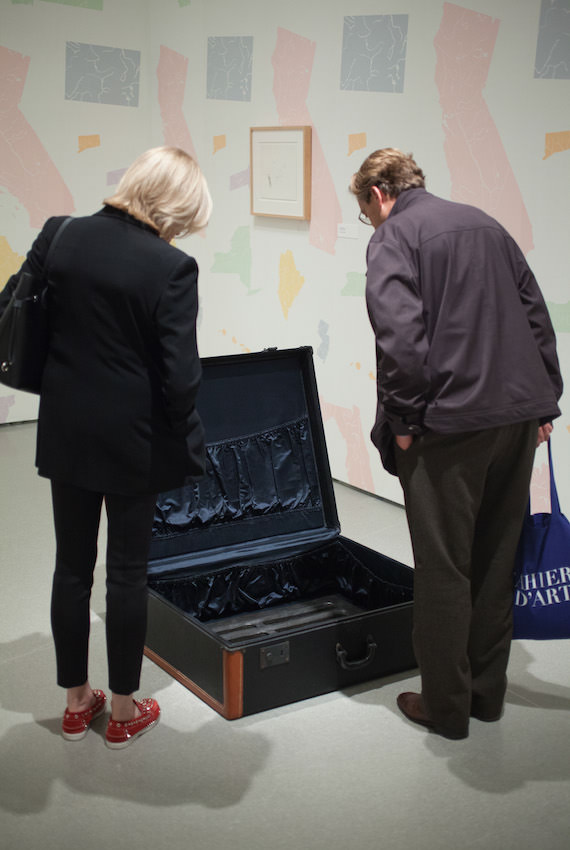
Untitled Leg
From there, we are introduced to a number of restaged shows. The first features his sink series. Gober thrives in trompe-l’oeil representation, for at first glance, these varied basins, with their pristine white gleam seem more like ready-mades than constructions. In fact, they are what the artist calls “portraits of sinks” that he has known or encountered. Some seem intimate, like Small Bathroom Sink, while others are large public vessels, such as Broom Sink. However, they all lack one crucial element: plumbing. Made during the AIDS crisis, their lack of utility is a sobering reminder of the inability to cleanse oneself of the disease. This concept culminates in the haunting tension between a trompe-l’oeil bed placed before a window looking out on two half-buried sinks. Like gravestones, the sinks imply the impending deaths of the many individuals tragically taken by intimacy.
Questions surrounding sex, politics, and civil rights continue throughout the show. The next galleries feature restaged sculptural installations from a 1989 exhibition at Paula Cooper gallery. Wallpaper featuring a pattern of a lynching and a white man sleeping serenely illustrate the awful history of the United States in overwhelming repetition, while in the next room, walls covered with line-drawn genitalia demand questions about our discomfort with sex and gender. An empty wedding dress and a bag of donuts sit in the center of each respective gallery. This physical uneasiness continues with Gober’s dismembered leg sculptures, formed with wax and human hair, beneath fully constructed fabric clothes and leather shoes.
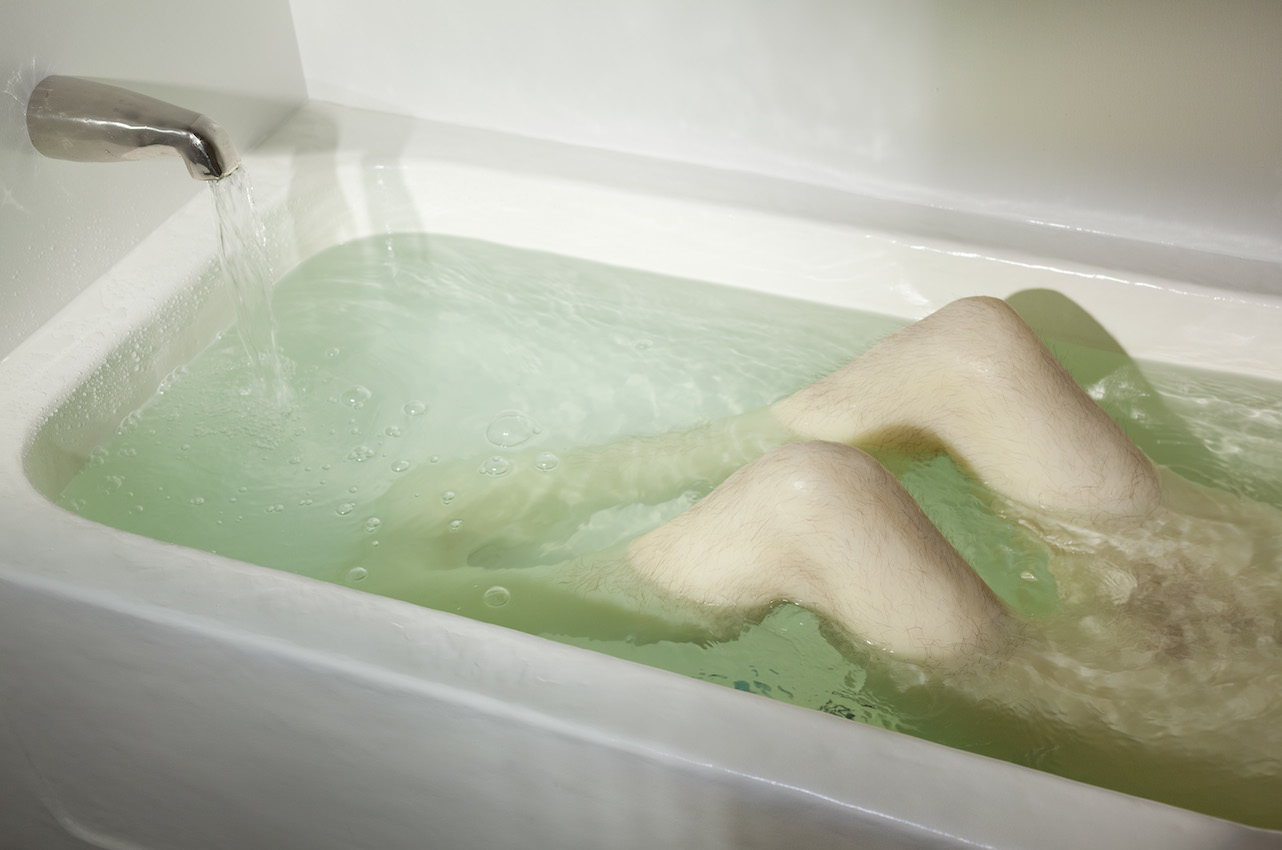
1989 – 1990
In later works, water makes an appearance. The sinks re-emerge, this time with plumbing pumping through them. The walls are covered in jungle-like wallpaper, and newspapers are strewn about the gallery floor. Another piece features a suitcase that also functions as a portal. Beneath a sewer grate, far below the gallery floor, is a tide pool with starfish, coral and human feet from a man and a baby. The use of water comes to a climax in a complex rumination on 9/11 in the form of a church with pews on either side of a center aisle that leads up to a crucifix with water streaming from Jesus’ nipples and into a pit in the gallery floor.
The themes here are rich and Gober seems to pose more questions than he answers. With adroit renderings and subversions of everyday objects and possessions, Gober illuminates issues as broad and troubling as sex, politics, and religion. The show is moving, and the sculptures are stunning in their simplicity and skill. Through the isolation and juxtaposition of our everyday objects, Gober implores us to consider the fraught history of American life, and as a result, asks us what it means to be an American today.

Beeswax, cotton, wood, leather, human hair




